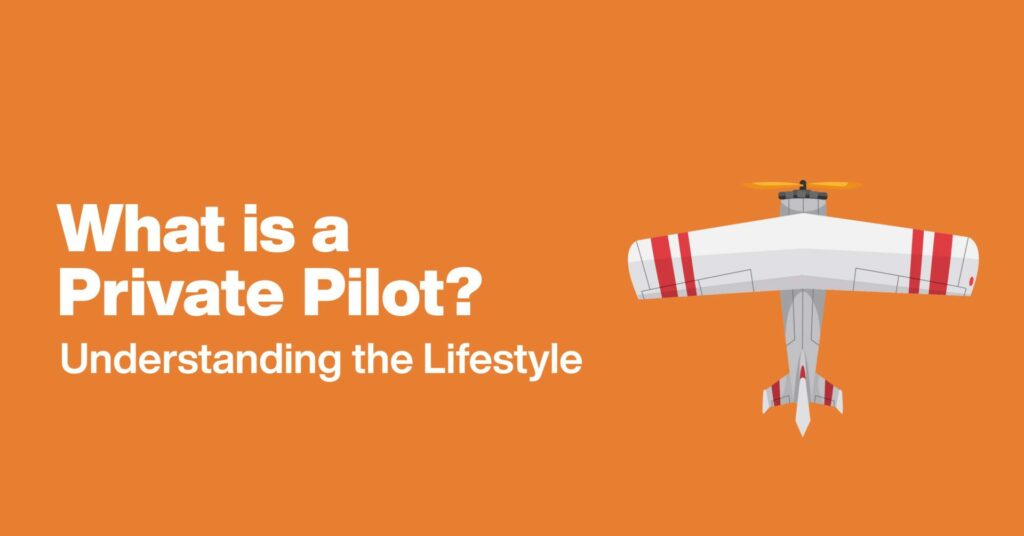Becoming a private pilot is a dream for many aviation enthusiasts. A private pilot is an individual who has obtained a private pilot license (PPL) that allows them to fly small aircraft for personal or recreational purposes. This license requires completing a certain number of hours of flight training, passing a medical exam, and passing a written exam.
But being a private pilot is more than just having a license. It comes with a unique lifestyle that involves a love for aviation, a passion for adventure, and a commitment to safety. Understanding what it means to be a private pilot can help aspiring pilots make informed decisions about pursuing this career path.
What types of aircraft can you fly as a private pilot?
As a private pilot, one can fly a variety of aircraft that fall under the category of “private pilot aircraft.” These aircraft are generally smaller and less complex than commercial airliners, and are designed for personal or recreational use. Some of the most common types of private pilot aircraft include single-engine piston planes, light sport aircraft, and helicopters. These aircraft are ideal for short flights and can be used for a variety of purposes, including sightseeing, transportation, and aerial photography.
It’s important to note that the type of private pilot aircraft that one is allowed to fly depends on the individual’s training, experience, and certification. Private pilots must undergo rigorous training and testing to earn their certification, and are required to adhere to strict safety guidelines when operating any type of private pilot aircraft. Additionally, different types of aircraft may require specialized training and certification, so it’s important for private pilots to stay up-to-date on their training and education in order to operate a wide range of private pilot aircraft safely and effectively.
What are the Limitations for a Private Pilot?
As exciting as it may be to obtain a private pilot license, there are several limitations that come with it. Private pilots must abide by certain restrictions that are put in place to ensure the safety of both the pilot and the passengers. Here are some of the common private pilots limitations must adhere to:
1. Cannot fly for compensation or hire
One of the biggest limitations of a private pilot license is that pilots cannot fly for compensation or hire. This means that private pilots cannot be paid for their services as a pilot, and they cannot charge passengers for the flight.
2. Cannot fly in certain weather conditions
Private pilot license holders are limited in their ability to fly in certain weather conditions, such as low visibility, icing conditions, or severe turbulence. Pilots must be trained and qualified to fly in these conditions in order to do so legally.
3. Cannot fly certain types of aircraft
Private pilots are limited in the types of aircraft they can fly. They are typically limited to aircraft that are single-engine and weigh less than 12,500 pounds.
4. Cannot fly in certain airspace
Private pilots are restricted from flying in certain airspace, such as military airspace or areas that are designated for commercial air traffic. Pilots must have the proper clearance and authorization to enter these areas.
5. Must adhere to certain flight restrictions
Private pilots are required to follow certain flight restrictions, such as maintaining a certain altitude or staying within a certain distance of an airport or other designated landing area.
6. Must maintain currency and proficiency
Private pilots must maintain their skills and knowledge through regular flight training and testing. They must also adhere to certain currency requirements, such as completing a certain number of flight hours or landings within a certain time period.
Is it worth it to become a Private Pilot?
Becoming a private pilot is an exciting experience but demands significant investment of time and money. It depends on individual goals and priorities, but for those passionate about aviation and adventure, it can be a worthwhile investment. Yet, the cost and effort involved in training and maintaining proficiency should be carefully considered. In summary, becoming a private pilot requires careful assessment of one’s resources and goals
How Garg Aviation can help
Garg Aviation Limited (GAL) can help individuals achieve their dream of becoming a private pilot by offering comprehensive training programs that cover Commercial Pilot License, Private Pilot License, multi-engine rating, Drone training etc. With experienced instructors and state-of-the-art equipment, GAL is committed to providing top-notch education and hands-on experience to help students become proficient pilots.
Conclusion
Being a private pilot offers a lifestyle that is both fulfilling and exciting. It presents an opportunity to experience the freedom of flying and build new skills that can help increase one’s proficiency as a pilot. Whether it’s for personal pleasure or a professional career, becoming a private pilot can be a rewarding experience. Flying a Private plane is an incredibly unique experience, one that’s filled with moments of relaxation, and excitement with unique challenges and will build new skills to increase your flying proficiency.
Frequently Asked Questions
Here are few answers related to your private pilot lifestyle queries
1. Can anyone become a private pilot?
Yes, anyone who meets the requirements can become a private pilot.
2. What kind of lifestyle can one expect as a private pilot?
Private pilots can expect a unique lifestyle filled with adventure, challenges, and the freedom of flying.
3. Can a private pilot fly for personal travel and recreation?
Yes, private pilots can fly for personal travel and recreation.
4. How does one maintain currency as a private pilot?
Private pilots must maintain currency through regular flight training and practice.
5. How much does it cost to obtain a private pilot license?
The cost to obtain a private pilot license varies, but it typically ranges from $10,000 to $15,000.

